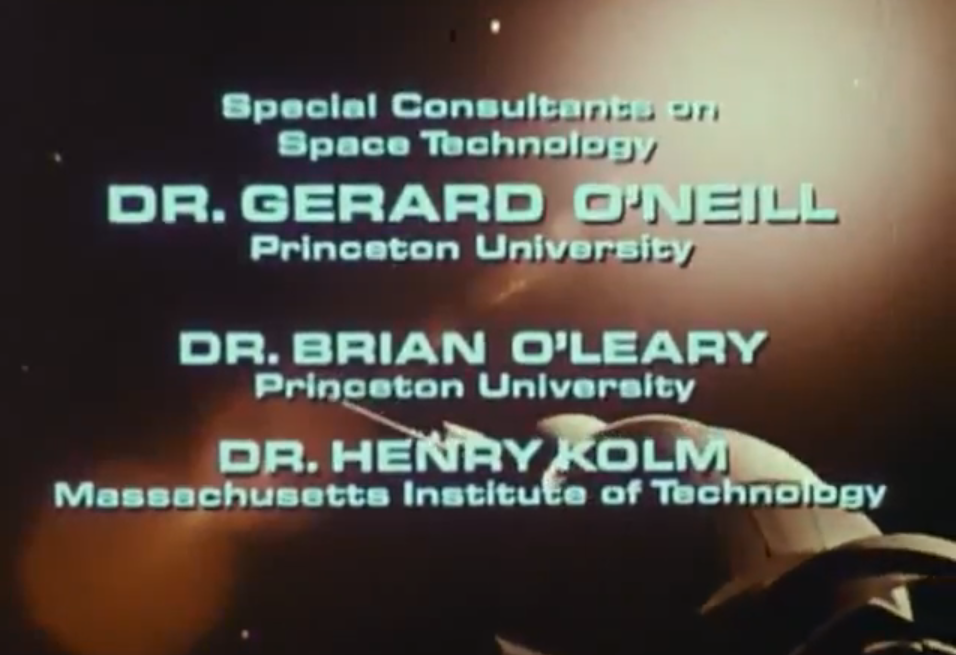The Elysium Field of Dreams
 Last night I saw the new sci-fi film Elysium. I don't want to get sidetracked from the focus of today's blog post so I'll just say it was fair to middling. The visuals were great but the plot and (especially) the character development were weak. I was given no sense of why I should root for either the doomed masses on Earth or the one-percenters living on Elysium. Blomkamp's earlier film District 9 was much better.
Last night I saw the new sci-fi film Elysium. I don't want to get sidetracked from the focus of today's blog post so I'll just say it was fair to middling. The visuals were great but the plot and (especially) the character development were weak. I was given no sense of why I should root for either the doomed masses on Earth or the one-percenters living on Elysium. Blomkamp's earlier film District 9 was much better.
Anyway - in my last Leaping Robot post, I explored a few artistic connections between Elysium and paintings done by artists in the mid-1970s. The goal was to show how the look Elysium's makers gave the eponymous space settlement drew from and was influenced by paintings of space colonies done 40 years ago.After reading my post, my colleague Ray Macauley at the University of Manchester pointed me to another spacey artifact from the same time period. In 1978, World Research (a firm I am not able to locate more information about) released a short film called Libra. (A short clip is here; the entire film can be viewed here.) Directed by Patty Newman, the 38 minute movie both complements and contrasts with Elysium. ((Matt Novak, whose Paleofuture blog has since migrated from the Smithsonian site to Gizmodo had a great piece about Libra which Ray also pointed me too.))
First, let me be clear about the obvious - Libra was a VERY obscure and low-budget film. I doubt ever saw much if any circulation (readers, feel free to correct me here) while Elysium is a Hollywood summer blockbuster with Matt Damon and Jodie Foster. So, I'm already mixing the apples and the oranges. Setting aside that difference...both films start in the same place - an overcrowded and resource-depleted Earth (another echo of the sonic boom caused by the 1972 The Limits to Growth report.
 Energy is at a premium on Earth, a point made when a gutless group of politicians and business leaders meet to consider an investment in the Libra settlement - the lights go out repeatedly forcing them to both curse the darkness and light candles.Libra's plot isn't very complicated - an investment banker and a "world senator" travel to the Libra colony on a fact-finding mission. One wants to see if its solar power and space manufacturing facilities warrant investment while the other is considering how to constrain the unbridled libertarians & capitalists who populate Libra.
Energy is at a premium on Earth, a point made when a gutless group of politicians and business leaders meet to consider an investment in the Libra settlement - the lights go out repeatedly forcing them to both curse the darkness and light candles.Libra's plot isn't very complicated - an investment banker and a "world senator" travel to the Libra colony on a fact-finding mission. One wants to see if its solar power and space manufacturing facilities warrant investment while the other is considering how to constrain the unbridled libertarians & capitalists who populate Libra. Libra is far less about plot development and entertainment. Instead, its main goal seems to have been instructional. First, a good part of the film is devoted to explaining how a space colony could be built, how it would work, and how bootstrapping one could lead to the eventual manufacture of solar power satellites which would beam energy (in the form of microwaves) back to Earth. In the 1970s, this was pitched as a rationale for building space settlements in the first place. Solar power beamed back to earth would be a valuable commodity that would justify the economic investment in outer space. It eventually underpinned Gerard O'Neill's concepts for the humanization of space. It provided O'Neill with a rationale for space development and it meshed space exploration with environmental and societal needs.
Libra is far less about plot development and entertainment. Instead, its main goal seems to have been instructional. First, a good part of the film is devoted to explaining how a space colony could be built, how it would work, and how bootstrapping one could lead to the eventual manufacture of solar power satellites which would beam energy (in the form of microwaves) back to Earth. In the 1970s, this was pitched as a rationale for building space settlements in the first place. Solar power beamed back to earth would be a valuable commodity that would justify the economic investment in outer space. It eventually underpinned Gerard O'Neill's concepts for the humanization of space. It provided O'Neill with a rationale for space development and it meshed space exploration with environmental and societal needs.
So, we should not be surprised when we see that O'Neill is listed as a "special consultant" to Libra:
In fact, Libra appeared - like Elysium does today, to a degree - as a nice advertisement for O'Neill's for space settlements and space manufacturing. One can even think of it as a tutorial for O'Neill's ideas. As shown in Libra, the colony looks like:
Inside, the happy space settlers are shown as:
 which is a detail taken from another Guidice painting:
which is a detail taken from another Guidice painting:
 OK - so far nothing too surprising. The makers of Libra (and Elysium) borrowed from space art. Yup. But where it gets much more interesting is when we start to learn more about life on Libra. In fact, on the space ride to Libra, we learn via an instructional video shown to the ethnically diverse group of passengers that it's a libertarian-flavored economics experiment.So the film also functions as a tutorial about libertarian economics.
OK - so far nothing too surprising. The makers of Libra (and Elysium) borrowed from space art. Yup. But where it gets much more interesting is when we start to learn more about life on Libra. In fact, on the space ride to Libra, we learn via an instructional video shown to the ethnically diverse group of passengers that it's a libertarian-flavored economics experiment.So the film also functions as a tutorial about libertarian economics.
One example - the banker and the senator talk (in a manner that resembles debates about "who built this?" during the 2012 Presidential election):
Senator: You know, it's their conceit that bothers me. They portray themselves as some sort of rugged individualists. Oh hell, it was government supported schools and programs that led to the technology that put this casino they call a society into space.
Banker: Yes, but it was the market economy that put the technology to work.
The film's narrator describes Libra's government as "small, democratically elected, but strictly limited in its areas of responsibility." The head of the government "Dr. Paul Baker", a "former professor of market philosophy at Stanford University" (played by James Avery).
 The message gets even more clear when one passenger asks the senator when they should exchange currency. On Libra, no one uses dollars or pounds or rubles. Instead, transactions are conducted in "Hayeks." Yes, HAYEKS. As in Friedrich, not Salma.
The message gets even more clear when one passenger asks the senator when they should exchange currency. On Libra, no one uses dollars or pounds or rubles. Instead, transactions are conducted in "Hayeks." Yes, HAYEKS. As in Friedrich, not Salma.
To hammer the point home, every so often Libra cuts back to Earth's failing systems and the corrupt and over-regulated world government system leading it. Socialism and an "equal distribution of the planet's resources" is the only solution they seem to have. One of the reactions to actual reports like The Limits to Growth was the claim that only a strict, perhaps totalitarian, world government could enact the change from a growth-oriented economy to one based on a steady-state equilibrium. (Paul Sabin's new book The Bet contrasts the positions of 1970s catastrophists and cornucopians quite nicely.) One of Libra's characters sums up the result of this confining attitude - "No place for intellectual curiosity...No new horizons."
More Economics 101 and Space Colonies for Dummies follow as various self-satisfied Librans explaining how it all works. For instance, O'Neill and Kolm's mass driver is detailed as a tool for getting lunar materials out to the colony where they can be processed into metal and glass. Like Elon Musk's recent revelation of his Hyperloop, the technologies of Libra are glossed over with the actual engineering details left unexamined.  There's even a computer called ABACUS which provides consumers with information - repeating the word "freecision...freecision" while calculating - so they can make the best choices in the free market. The message - computers (like those used to crunch the data in the Limits report) can't make decisions for people. This "freesponsibility" is the secret ingredient that's been attracting more and more "regulation refugees" from Earth. Libra culminates in a debate between Dr. Baker (Matt Novak calls him an über-Galt) and the "world senator."
There's even a computer called ABACUS which provides consumers with information - repeating the word "freecision...freecision" while calculating - so they can make the best choices in the free market. The message - computers (like those used to crunch the data in the Limits report) can't make decisions for people. This "freesponsibility" is the secret ingredient that's been attracting more and more "regulation refugees" from Earth. Libra culminates in a debate between Dr. Baker (Matt Novak calls him an über-Galt) and the "world senator."
 Baker comes out on top...and, back on the Earth, the only solution the regulators and bureaucrats have is to try and tax Libra (as the evil political consultant tells the senator - "We still hold the one important card. The legal force of government"). However, more people will decide to join the homesteaders on the High Frontier. The space colony drifts past the sun, music reminiscent of Daft Punk plays, and the credits roll...
Baker comes out on top...and, back on the Earth, the only solution the regulators and bureaucrats have is to try and tax Libra (as the evil political consultant tells the senator - "We still hold the one important card. The legal force of government"). However, more people will decide to join the homesteaders on the High Frontier. The space colony drifts past the sun, music reminiscent of Daft Punk plays, and the credits roll...
Libra was a very modest film. It doesn't even exist in the IMDB. So why does it matter? Here are four reasons...
One: Libra illustrates the libertarian-inflected nature of the 1970s-era grassroots pro-space movement. ((These same attitudes are found today's AltSpace or Space 2.0 movement. Here the idea is that space exploration is something that doesn't require a bloated federal agency or clumsy aerospace giant to lead the way. Instead small privately-held technology firms like SpaceX can do it (albeit with NASA contracts to pay the bills).)) Gerard O'Neill would not have been recognizable as a libertarian, certainly not by the standards of, say, Ron or Rand Paul or the Tea Party. I've seen no evidence that he read Hayek. But he did believe that space was a place, not a government-run program and he later became more closely aligned with Reagan-era deregulation and privatization. O’Neill was also an avid science fiction fan, especially enjoying works like Robert Heinlein’s The Moon is a Harsh Mistress (to which Libra bears more than a passing resemblance).
Two: Libra gives us a window through which we can see how people imagined what living in a space colony might be like. Recall that O'Neill's ideas were presented to millions of people in the U.S. and overseas via mass market magazines while his appearances with Merv Griffin and Johnny Carson popularized the space colony idea for an even wider audience. While many people dismissed him or were simply entertained by his visioneering, some percentage of this audience actually used them as ingredients for further imagination, speculation, and dreaming. Space colonies à la Libra were clean, environmentally sound habitats - Petri dishes where people could engage in social, political, sexual, and economic experimentation.
Three: Sci-fi films reflect not just the present but also some sense of what we think the future could or should be like. The stark differences between 2013's Elysium and a modest film like Libra gives a sobering view of how American politics has drifted rightward while social inequality has grown. Libra's inhabitants seem a happy (if smug) combination of earnest pioneers. Ayn Randian entrepreneurs, and main street small business owners. The residents of Elysium appear as bloodless technocrats, ineffectual politicians, or the type of folks one might encounter at a prep school reunion mixer.
Finally: Both films share a common feature - an unrealistic depiction of how regimented and routinized life aboard an ecologically self-enclosed habitat like either Libra or Elysium would have to be. It would be far from the self-governing social experiment of Libra or the lush private venture of Elysium. In 1978, physicist Freeman Dyson, although he supported O'Neill's goal - "the free expansion of small groups of private citizens" into space - critiqued his colleague's vision for what this would look like. Forget citizen-astronauts. If such space settlements were ever built, they cannot "be considered as a private adventure." Instead, it "must inevitably be a government project, with bureaucratic management, with national prestige at stake, and with occupational health and safety regulations rigidly enforced." ((Freeman J. Dyson, “Pilgrim Fathers, Mormon Pioneers, and Space Colonists: An Economic Comparison,” Proceedings of the American Philosophical Society, 1978, 122, 2: 63-68.)) So forget cruise ships in space...think submarines.
So much for the free-wheeling zero-g sex.



